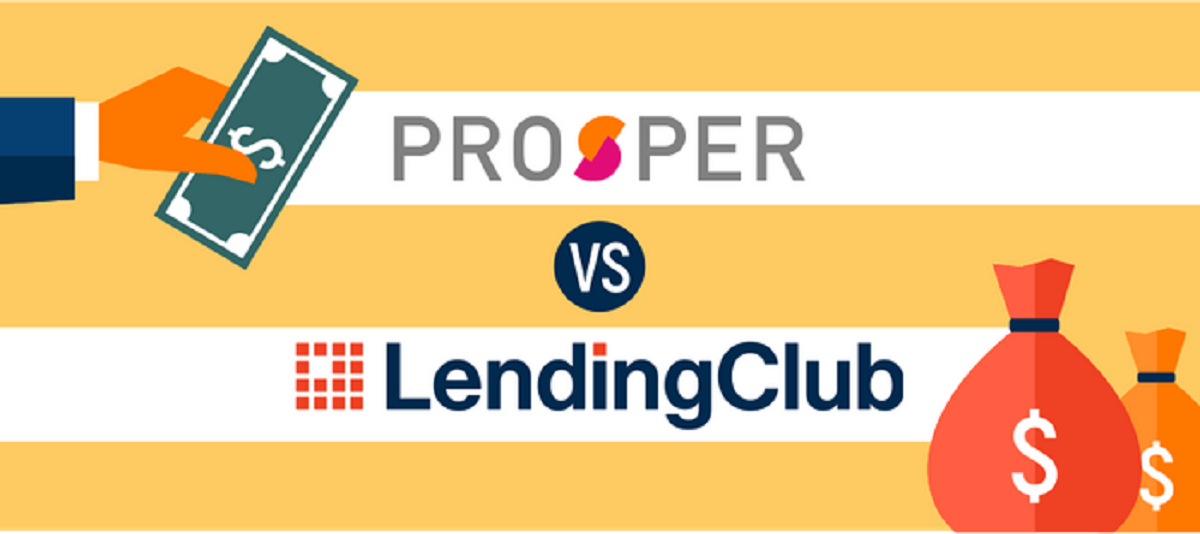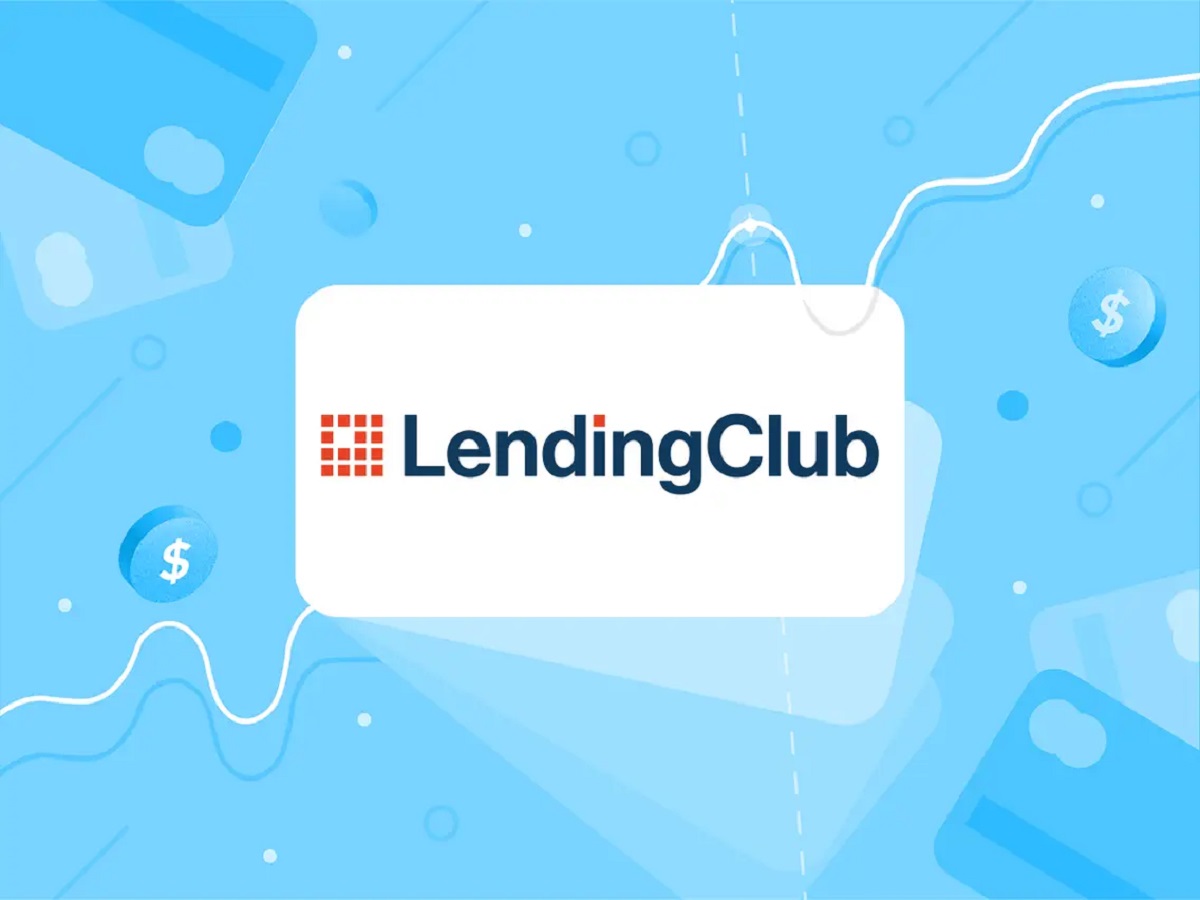Introduction
Lending Club is an online peer-to-peer lending platform that connects borrowers with investors. It offers an alternative to traditional banks by facilitating loans between individuals or businesses seeking funding and investors looking to earn a return on their money. This innovative model has gained popularity in recent years, as it offers borrowers access to affordable loans and investors the opportunity to diversify their investment portfolios.
Unlike traditional banks, which act as intermediaries for loans, Lending Club allows investors to directly fund loans and earn interest on the amount they invest. This creates a win-win situation, as borrowers can obtain loans with competitive interest rates, while investors have the potential to earn higher returns compared to traditional investment options.
Investing in Lending Club can be an attractive option for individuals who are looking to diversify their investment portfolio or seek higher returns compared to traditional savings accounts or low-yield investments. However, it’s important to understand how Lending Club works and the potential risks and rewards associated with investing in peer-to-peer lending platforms.
In this article, we will explore how Lending Club works, the ways in which investors can make money through the platform, and the strategies that can be implemented to maximize returns while managing risk. Additionally, we will compare investing in Lending Club to other investment options to help you make an informed decision about incorporating peer-to-peer lending into your investment strategy.
However, it’s important to note that investing always carries a certain level of risk, and it’s essential to carefully consider your financial objectives and risk tolerance before investing in Lending Club or any other investment platform. With that in mind, let’s dive into the world of Lending Club and discover how investors can make money through this unique peer-to-peer lending platform.
What is Lending Club?
Lending Club is one of the largest peer-to-peer lending platforms that allows individuals and businesses to borrow money directly from investors. Founded in 2006, Lending Club operates entirely online, making the lending process convenient and accessible for both borrowers and investors.
The platform connects borrowers and investors through an online marketplace, eliminating the need for traditional banking institutions. Borrowers can request loans for various purposes, such as debt consolidation, home improvement, or starting a small business. Investors, on the other hand, have the opportunity to fund these loans and earn interest on their investments.
One of the key advantages of Lending Club is its ability to offer competitive interest rates to borrowers. By cutting out the middleman and connecting borrowers directly with investors, Lending Club can provide lower interest rates compared to traditional banks. This is beneficial for borrowers who are seeking affordable loans and can help them save money on interest payments.
For investors, Lending Club provides an opportunity to diversify their investment portfolios beyond the traditional stock market or real estate. By investing in loans through Lending Club, investors can potentially earn higher returns compared to other investment options. They have the flexibility to choose which loans to invest in based on their risk appetite and investment goals.
Lending Club also offers a user-friendly platform that allows investors to easily manage their investments. They have access to tools and information that can help them make informed investment decisions. Investors can review borrower profiles, loan information, and historical performance to assess the potential risks and rewards before making an investment.
Overall, Lending Club revolutionizes the lending and investing landscape by providing an online marketplace that connects borrowers and investors. It offers borrowers affordable loans and investors the opportunity to earn attractive returns. Whether you are looking to borrow money for personal or business purposes or seeking to diversify your investment portfolio, Lending Club can be a valuable platform to explore.
How does Lending Club Work?
Lending Club operates by connecting borrowers and investors through its online platform. The process starts with borrowers submitting a loan application, which undergoes a thorough evaluation to assess creditworthiness and determine the interest rate for the loan.
Investors, also known as lenders, have the opportunity to browse through a wide range of loan listings and select the loans they want to invest in. They can review borrower information, loan purpose, credit score, and other details to evaluate the potential risks and returns associated with each loan.
Once investors have chosen the loans they want to fund, they commit their desired investment amount. To spread the risk, each loan is typically funded by multiple investors, with each investor contributing a portion of the loan amount.
Lending Club then disburses the loan funds to the borrower, who is responsible for making regular monthly payments, including principal and interest, over the loan term. These payments are then distributed to the corresponding investors who funded the loan, providing them with a steady stream of interest income.
Investors have the option to reinvest the monthly payments they receive, further compounding their investment returns. This reinvestment process allows investors to potentially earn the power of compound interest, where interest is earned on both the original investment and any reinvested earnings.
Throughout the loan term, Lending Club provides ongoing servicing and support to borrowers and investors. They handle tasks such as payment processing, collections, and investor reporting. This streamlines the investment process for lenders and ensures that borrowers have a seamless loan experience.
At the end of the loan term, the borrower is expected to have fully repaid the loan, including interest. Investors then receive their principal investment back, along with the interest they earned over the loan term. This cycle of borrowing, investing, and repayment continues, creating a dynamic ecosystem for both borrowers and investors on the Lending Club platform.
Overall, Lending Club simplifies the lending and investing process by providing a transparent and efficient platform for borrowers and investors to connect. By utilizing technology and bypassing traditional banking institutions, Lending Club offers borrowers access to affordable loans and investors the opportunity to earn attractive returns.
Investing in Lending Club
Investing in Lending Club can be an attractive option for individuals looking to diversify their investment portfolio and potentially earn higher returns compared to traditional investment options. However, it’s important to understand the process and consider the potential risks and rewards before diving into peer-to-peer lending.
To start investing in Lending Club, you’ll need to create an account and complete the necessary registration process. Once your account is set up, you can begin browsing through available loans and selecting the ones you want to invest in. Lending Club provides detailed information about each loan, including the borrower’s credit score, loan purpose, and interest rate.
When it comes to investing in Lending Club, there are a few key considerations to keep in mind. First, it’s important to diversify your investments across multiple loans. By spreading your investment across different borrowers and loan grades, you can reduce the impact of defaults on your overall returns.
Next, it’s crucial to carefully evaluate the borrower’s creditworthiness and loan purpose before making an investment. Lending Club provides a Prosper Rating (ranging from A to G) for each loan, representing the level of credit risk associated with the borrower. Higher-rated loans typically offer lower interest rates but may also have a lower chance of default.
In terms of investment amount, Lending Club has a minimum investment requirement. However, it’s recommended to invest a larger amount to diversify across multiple loans effectively. This can help mitigate the impact of default on your investment returns.
Once you have invested in loans, Lending Club will handle the loan servicing, including collecting payments from borrowers and distributing the principal and interest to investors. It’s important to note that investing in Lending Club is not a guaranteed way to make money. There is a risk of borrower default, which could result in partial or total loss of your investment.
As an investor, you will earn interest income on the loans you have funded. Lending Club calculates the interest based on the borrower’s payments and distributes it to you on a monthly basis. You also have the option to reinvest the monthly payments, allowing you to compound your returns and potentially increase your overall investment income over time.
It’s worth considering the fees associated with investing in Lending Club. Lending Club charges investors a service fee based on the amount of interest received. The fee structure varies depending on the size of your investment portfolio. It’s important to factor in these fees when assessing the potential returns on your investment.
In summary, investing in Lending Club can be an appealing option for investors seeking to diversify their investment portfolio and potentially earn higher returns. However, it’s important to carefully evaluate the borrower’s creditworthiness, diversify your investments, and understand the risks involved. By taking a cautious and informed approach, you can maximize the potential rewards of investing in Lending Club.
Earning Interest Income
One of the main ways investors make money through Lending Club is by earning interest income on the loans they have funded. As an investor, you receive a portion of the interest payments made by the borrower each month.
The interest rate you earn on the loans you invest in is determined by various factors, including the borrower’s creditworthiness, loan purpose, and loan grade assigned by Lending Club. Higher-rated loans tend to offer lower interest rates, while lower-rated loans can provide higher interest rates to compensate for the increased risk.
It’s important to note that the interest income you earn from Lending Club is considered taxable income. You will receive a Form 1099-INT from Lending Club at the end of the year, which reports the total interest you earned. You should consult with a tax professional to understand the implications and potential tax obligations associated with your interest income.
The interest income from Lending Club can provide a consistent stream of cash flow for investors. Each month, as borrowers make their monthly payments, a portion of that payment is allocated towards the interest. This interest income can be reinvested or withdrawn, depending on your investment goals and strategy.
Reinvesting the interest income can be a powerful strategy for maximizing your returns. By reinvesting the interest, you can take advantage of the power of compound interest. This means that not only are you earning interest on your initial investment, but you are also earning interest on the interest that has already been earned. Over time, this compounding effect can significantly boost your overall investment returns.
Alternatively, you may choose to withdraw the interest income from your Lending Club account. This can provide you with a regular cash flow and allow you to enjoy the immediate benefits of your investment returns. However, it’s important to consider the potential impact on your overall investment strategy and long-term financial goals.
Earning interest income from Lending Club can be an attractive feature of investing in peer-to-peer lending. It provides investors with the opportunity to earn consistent returns that can potentially outperform traditional savings accounts or low-yield investments. However, it’s crucial to carefully evaluate the borrower’s creditworthiness and manage your investment portfolio to minimize the risk of default and optimize your interest income.
The Power of Compound Interest
Compound interest is a powerful force that can significantly impact your investment returns over time. It is the concept of earning interest not only on your initial investment but also on the accumulated interest that you have already earned.
Investing in Lending Club can harness the power of compound interest to potentially enhance your overall returns. As borrowers make their monthly payments, a portion of that payment is allocated towards the interest on the loan. As an investor, this interest income can be reinvested, allowing you to continually earn interest on your initial investment and any previously earned interest.
By reinvesting your interest income, you create a compounding effect where your earnings generate more earnings over time. This can lead to exponential growth in your investment returns and accelerate the rate at which your money grows.
For example, let’s say you invest $1,000 in Lending Club and earn an average annual return of 7%. If you choose to reinvest the interest income over a period of several years, the compounding effect can significantly boost your investment. As each interest payment is reinvested, your investment grows larger, and the subsequent interest payments become even greater.
Over time, the power of compound interest can turn a modest initial investment into a substantial sum. By consistently reinvesting your interest income and allowing it to compound, you can potentially achieve higher returns and reach your financial goals more quickly.
It’s important to note that compound interest is a long-term strategy, and it requires patience and discipline. The true benefits of compound interest are most evident over extended periods, as the compounding effect has time to work its magic. This means that staying invested in Lending Club and continuing to reinvest your interest income can yield significant rewards over the long run.
However, it’s crucial to carefully manage your investment portfolio and evaluate the risks associated with each loan. Diversification and thorough analysis of borrowers’ creditworthiness are key to minimizing the risk of default and maximizing the potential benefits of compound interest.
In summary, the power of compound interest can greatly amplify your investment returns over time. By reinvesting your interest income through Lending Club, you can harness the compounding effect and potentially achieve higher growth in your investment. However, it’s important to adopt a long-term mindset, diversify your investment portfolio, and carefully manage the risks to fully benefit from the power of compound interest.
Investor Fees and Returns
When investing in Lending Club, it’s important to consider the fees associated with participating on the platform. Lending Club charges investors a service fee based on the amount of interest received. The fee structure varies depending on the size of your investment portfolio.
The service fee is typically a percentage of the interest income earned on the loans you have funded. The fee ranges from 1% to 4% and decreases as your investment portfolio grows larger. It’s essential to factor in these fees when assessing the potential returns on your investment.
The fees charged by Lending Club can impact your overall investment returns. For example, if you earn an average interest rate of 7% on your investments and are charged a 1% service fee, your net return would be 6%. Therefore, it’s important to carefully analyze the potential returns and consider the impact of fees on your investment strategy.
In addition to fees, the returns you can expect to earn on your Lending Club investments will depend on various factors, including the loan grade and the performance of the borrowers. Higher-rated loans generally have lower interest rates but carry lower default risk, while lower-rated loans can offer higher interest rates but have a higher risk of default.
Historically, investors in Lending Club have achieved net annualized returns ranging from 3% to 8%, depending on their investment strategy and risk appetite. However, it’s important to note that past performance is not indicative of future results, and individual investor returns can vary.
To optimize your returns and mitigate risks, it’s crucial to diversify your investments across multiple loans and loan grades. This spreads your investment across different borrowers, lowering the impact of defaults on your overall returns. Diversification is a key strategy for managing risk and potentially enhancing your long-term investment performance.
It’s also worth mentioning that Lending Club provides tools and information to help investors evaluate the creditworthiness of borrowers and make informed investment decisions. By utilizing these resources and conducting thorough analysis, you can assess the potential risks and rewards of individual loans and construct a well-diversified portfolio.
In summary, investor fees and returns are important considerations when investing in Lending Club. It’s crucial to factor in the service fees charged by Lending Club and understand how they affect your overall investment returns. Additionally, diversification and careful analysis of loan grades and borrower creditworthiness can help optimize your returns and manage investment risk. By weighing these factors, you can make informed decisions and potentially earn attractive returns on your Lending Club investments.
Default Risk and Potential Loss
Investing in Lending Club comes with the inherent risk of borrower default, which can result in potential loss of your investment. Default occurs when a borrower is unable or unwilling to make their loan payments as agreed upon in the loan contract. This can happen due to financial hardship, job loss, or other unforeseen circumstances.
Default risk is a critical factor to consider when investing in Lending Club. While Lending Club takes measures to evaluate borrowers’ creditworthiness, there is still a chance that some borrowers may default on their loans. This could result in a partial or total loss of your invested funds.
To mitigate default risk and potential losses, it’s important to diversify your investments across multiple loans and loan grades. By spreading your investment across different borrowers, you reduce the impact of defaults on your overall investment returns. Diversification is a key strategy to help manage risk and protect your investment portfolio.
Another factor to consider is the loan grade assigned to each loan by Lending Club. The loan grade represents the level of credit risk associated with the borrower, with grades ranging from A to G. Higher-rated loans tend to have a lower chance of default but offer lower interest rates, while lower-rated loans may carry a higher default risk but offer higher potential returns.
It’s important to carefully evaluate loan grades and consider the trade-off between risk and potential return when selecting loans to invest in. Lending Club provides information about the Prosper Rating (ranging from A to G), loan purpose, and borrower’s credit score, allowing you to make informed investment decisions.
Although Lending Club takes measures to manage risk and reduce default rates, it’s important to understand that investing in peer-to-peer lending platforms like Lending Club does carry risks. The creditworthiness of borrowers, economic conditions, and other factors can impact the ability of borrowers to repay their loans.
It’s crucial to assess your own risk tolerance and carefully consider the potential losses that may occur in the event of borrower default. While historical data and performance metrics can provide insights into overall platform performance, they do not guarantee future results, and individual investor experiences may vary.
To summarize, default risk is a significant factor to consider when investing in Lending Club. Diversification, thorough evaluation of loan grades, and understanding of your own risk tolerance are important strategies for mitigating potential losses. While Lending Club strives to minimize default rates, investing in peer-to-peer lending platforms carries risks, and it’s crucial to carefully manage your investments and assess the potential impact of defaults on your portfolio.
Diversification Strategies
Diversification is a crucial strategy when investing in Lending Club or any other investment platform. It involves spreading your investment across multiple loans to reduce the impact of any single loan default on your overall portfolio. Diversification helps manage risk and increases the likelihood of achieving more consistent and stable investment returns.
Here are a few diversification strategies to consider when investing in Lending Club:
- Invest in Multiple Loans: Rather than investing a significant amount in a single loan, consider spreading your investment across multiple loans. By diversifying your investment, you can reduce the impact of any default on your overall returns. Investing in a range of loans with different borrowers and loan grades can help create a balanced portfolio.
- Allocate Investments Across Loan Grades: Lending Club assigns loan grades ranging from A to G, representing the creditworthiness of borrowers. Allocating your investments across different loan grades can help manage risk. Higher-rated loans tend to have lower default rates but offer lower returns, while lower-rated loans may have higher returns but carry a higher default risk. Balancing your investment across a range of loan grades can help optimize risk and potential returns.
- Consider Loan Duration: Lending Club offers loans with various durations, ranging from a few months to several years. By diversifying your investments across different loan durations, you can further manage risk. Shorter-duration loans may provide faster liquidity, while longer-duration loans can potentially offer higher returns. Assess your investment goals and liquidity needs to determine the appropriate mix of loan durations in your portfolio.
- Regular Monitoring and Reinvestment: Monitoring the performance of your loans and reinvesting your received payments is crucial for successful diversification. As loans are repaid and generate interest income, consider reinvesting the received funds into new loans. This strategy allows you to continuously diversify your investments and take advantage of the power of compound interest.
Implementing these diversification strategies helps to spread your risk and create a well-balanced investment portfolio. It’s important to note that while diversification can minimize risk, it does not eliminate it entirely. There is still the potential for individual loans or loan grades to default, which could result in losses. Therefore, it’s essential to carefully assess each loan opportunity, evaluate borrower creditworthiness, and consider your own risk tolerance when constructing a diversified portfolio on Lending Club.
By employing effective diversification strategies, you can enhance the stability and potential returns of your Lending Club investment while managing risk. Diversification is a cornerstone of successful investing, and applying these strategies can help you achieve a well-structured and resilient investment portfolio.
Strategies for Maximizing Returns
Maximizing returns is a key goal for investors in Lending Club. While returns can never be guaranteed, there are several strategies you can employ to optimize your investment performance. By carefully considering these strategies, you can potentially increase your chances of earning attractive returns on your Lending Club investments.
Here are a few strategies to consider for maximizing your returns:
- Select Higher-Rated Loans: Higher-rated loans typically have lower default rates but may offer lower interest rates. However, they can provide a more stable and predictable return profile. Consider focusing on loans with higher Prosper Ratings (A or B) for a more conservative investment approach.
- Balanced Approach: To strike a balance between risk and return, diversify your investments across different loan grades. Allocating your funds across multiple loan grades allows you to potentially benefit from higher returns associated with riskier loans while mitigating the impact of defaults through exposure to lower-risk loans.
- Reinvest Interest Income: Reinvesting the interest income you receive from your Lending Club investments can compound your returns over time. By reinvesting the interest, you allow your investment to grow faster through the power of compound interest. This strategy can lead to exponential growth in your investment returns over the long term.
- Regular Portfolio Monitoring: Keep a close eye on the performance of your investments. Regularly review borrower payments, delinquency rates, and default rates. Identifying any potential red flags early on can allow you to make necessary adjustments to your investment strategy and minimize potential losses.
- Consider Loan Purpose: Evaluate the loan purpose of potential investments. Loans for debt consolidation or small business purposes may be more likely to have a positive track record compared to loans for speculative purposes. Preferentially investing in loans for more responsible purposes can help increase the chances of successful repayment and maximize your returns.
It’s worth mentioning that there is a trade-off between risk and return. Higher returns are often associated with higher levels of risk. It’s important to carefully assess your risk tolerance and investment objectives before implementing these strategies. It’s also crucial to diversify your investment portfolio and spread your risk across multiple loans to mitigate the impact of any individual loan default.
Ultimately, the key to maximizing returns in Lending Club is to carefully analyze the loan opportunities, evaluate borrower creditworthiness, and prudently manage your investment portfolio. A well-informed and diversified approach, along with disciplined monitoring and reinvestment of your returns, can significantly enhance your chances of earning attractive returns on your Lending Club investments.
Investing in Lending Club vs. Other Investments
When considering investment options, it’s important to evaluate the benefits and drawbacks of investing in Lending Club compared to other investment avenues. Here, we will explore how investing in Lending Club stacks up against traditional investments such as stocks, bonds, and savings accounts.
One of the main advantages of investing in Lending Club is the potential for higher returns compared to traditional savings accounts or bonds. Lending Club investments have historically yielded net returns ranging from 3% to 8%, depending on the investor’s strategy and risk appetite. This can be an attractive alternative for individuals seeking higher yields and looking to diversify their investment portfolio.
Compared to stocks, investing in Lending Club can offer a more predictable and stable return profile. The returns from Lending Club are based on interest income generated from borrower loan payments, which provides a regular and consistent cash flow for investors. In contrast, stock returns can be more volatile and subject to market fluctuations.
Another advantage of investing in Lending Club is the ability to directly fund individual loans. This allows investors to have a tangible impact on borrowers’ lives by providing them with access to affordable loans. In comparison, investing in stocks or bonds does not usually provide the same level of direct influence on individuals or small businesses.
However, it’s important to consider the potential risks of investing in Lending Club. The platform is not immune to default risk, and there is a chance that borrowers may be unable to repay their loans, resulting in potential losses for investors. Additionally, the lack of liquidity in peer-to-peer lending can be a drawback compared to more liquid investments like stocks or ETFs.
Investing in Lending Club also requires a thorough assessment of borrower creditworthiness and loan grades, as well as active portfolio management. This may not appeal to investors who prefer a more passive investment approach or who lack the time or expertise to evaluate individual loans.
Comparing Lending Club to savings accounts, the potential returns from peer-to-peer lending can significantly outperform the low interest rates offered by most savings accounts. However, savings accounts provide the advantage of liquidity and easier access to funds, making them a more suitable option for short-term savings goals or emergency funds.
In summary, investing in Lending Club offers the potential for higher returns compared to traditional savings accounts, with a more predictable return profile than stocks. It allows investors to directly impact borrowers’ lives while diversifying their investment portfolio. However, it’s crucial to carefully evaluate the risks, conduct thorough borrower analysis, and actively manage your investment portfolio. When considering Lending Club as an investment option, it’s important to assess your risk tolerance, investment objectives, and liquidity needs, and compare them to the potential benefits offered by other investment avenues.
Conclusion
Investing in Lending Club can be an appealing option for individuals looking to diversify their investment portfolios and potentially earn higher returns. The platform offers borrowers access to affordable loans and provides investors the opportunity to earn interest income by funding those loans. However, it’s important to understand how Lending Club works, the potential risks involved, and the strategies that can be implemented to optimize returns while managing risk.
Lending Club operates as an online peer-to-peer lending platform, connecting borrowers and investors through its marketplace. Investors have the flexibility to select loans to fund based on borrower profiles, loan purpose, and creditworthiness. By diversifying investments across multiple loans, loan grades, and loan durations, investors can spread risk and potentially enhance returns.
Diversification, careful evaluation of loan grades and borrower creditworthiness, and reinvestment of interest income are key strategies for maximizing returns and managing risk in Lending Club. It’s important to remember that there is a possibility of borrower default, which may result in potential loss of investment.
When comparing investing in Lending Club to other investment options, it’s important to consider factors such as potential returns, liquidity, and level of risk. While Lending Club can offer higher returns compared to traditional savings accounts or bonds, it may not provide the same level of liquidity or potential for capital appreciation as stocks or real estate.
Ultimately, investing in Lending Club requires careful analysis and consideration of individual investment goals, risk tolerance, and desired level of involvement. It can be a valuable addition to an investment portfolio, providing diversification and potentially higher returns. However, investors should conduct thorough research, actively manage their investment portfolios, and stay informed about changes and updates in the peer-to-peer lending industry.
As with any investment, it’s important to engage in due diligence, carefully consider risks, and consult with financial professionals before making investment decisions. By doing so, investors can make informed choices that align with their financial goals and potentially reap the benefits of investing in Lending Club.

























